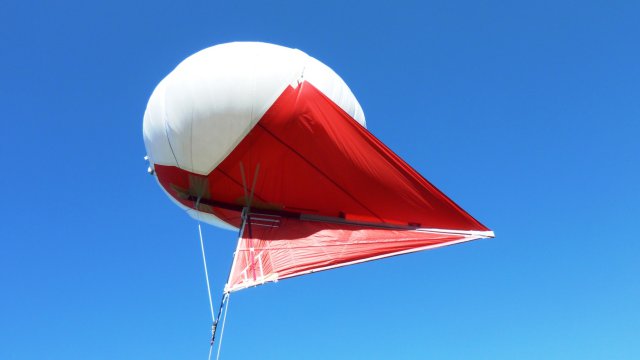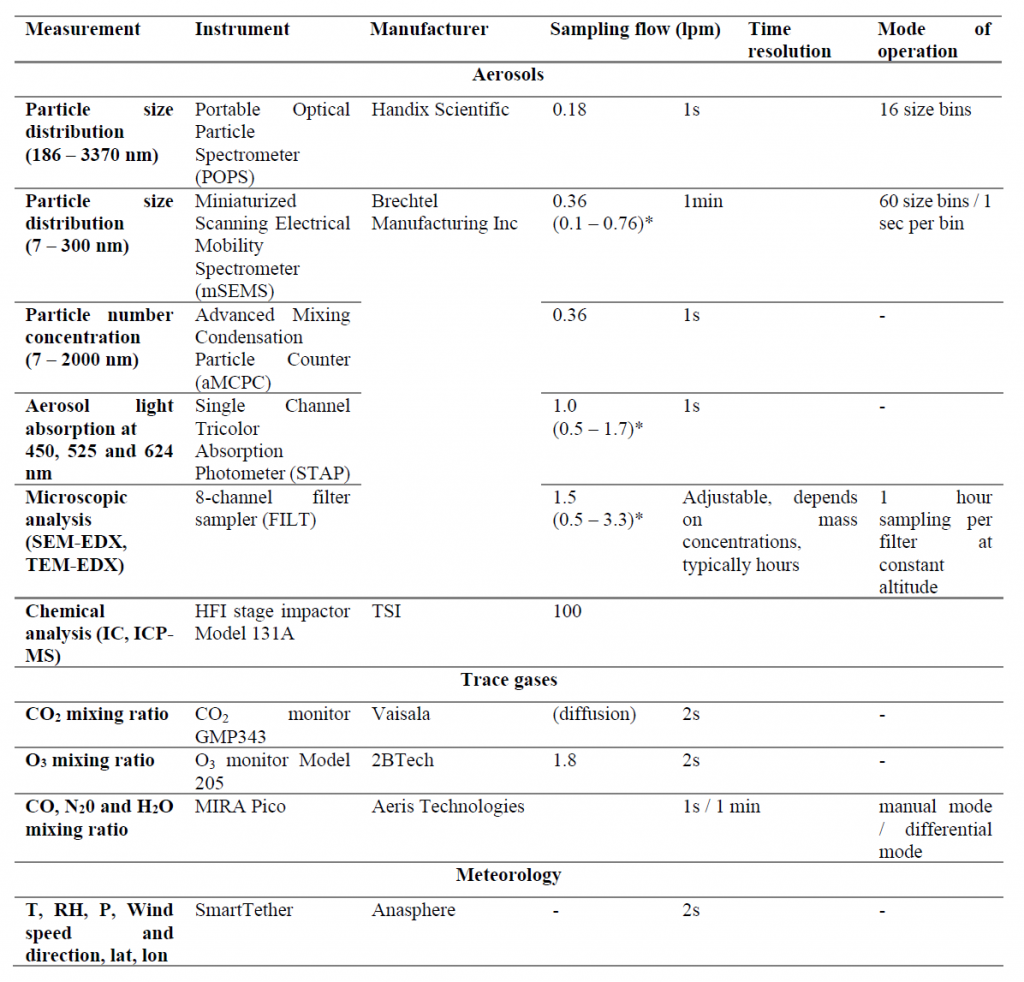
a Helikite is a tethered balloon with kite elements that enhance its lifting capacity (image from https://www.uasvision.com/)
Modular, Multiplatform-Compatible Air Measurement System (MoMuCAMS)
Duration: started May 2020
Scope of Project
The primary objective of developing the MoMuCAMS is to overcome the current lack of vertical measurements of atmospheric constituents such as aerosols and trace gases in extreme environments (Arctic, Antarctic) and over complex terrain (Alps) to answer a number of long-standing questions. Atmospheric observations in polar and alpine environments are mostly bound to the surface (land-based observatories), while only extremely few measurement sites operate infrastructure such as tethered balloons for systematic, vertically resolved measurements. This leaves an important gap in our understanding of small scale atmospheric processes that happen within the planetary boundary layer and the lowermost troposphere. These dynamic and chemical processes are directly relevant to air pollution levels as well as cloud formation.
MoMuCAMS will carry a number of miniaturized and cutting-edge aerosol and trace gas instruments, as well as meteorological sensors. It will be attached to a Helikite, which is a tethered balloon with a kite that enhances its lift. Our Helikite has a volume of 45 m3 and a tether of 800 m.
MoMuCAMS is a very flexible and modular system in order to be equipped for a large diversity of research questions, some of which relate to climate change relevant processes and others to air quality issues. Among those questions are:
- Do surface or free tropospheric sources of particles drive low-level cloud formation over the open ocean, the pack ice or tundra?
- What is the vertical distribution of ice nucleating particles, such as microorganisms and mineral dust, in polar regions?
- How does air pollution disperse across the temperature inversion layers typical for wintertime Arctic conditions, and how is it chemically transformed across this boundary?
First measurements were conducted in Sembrancher, Valais, in January 2021. link
Future deployments are planned within the framework of the Alaskan Layered Pollution Atmospheric Chemistry (ALPACA) project. link
